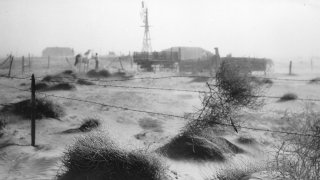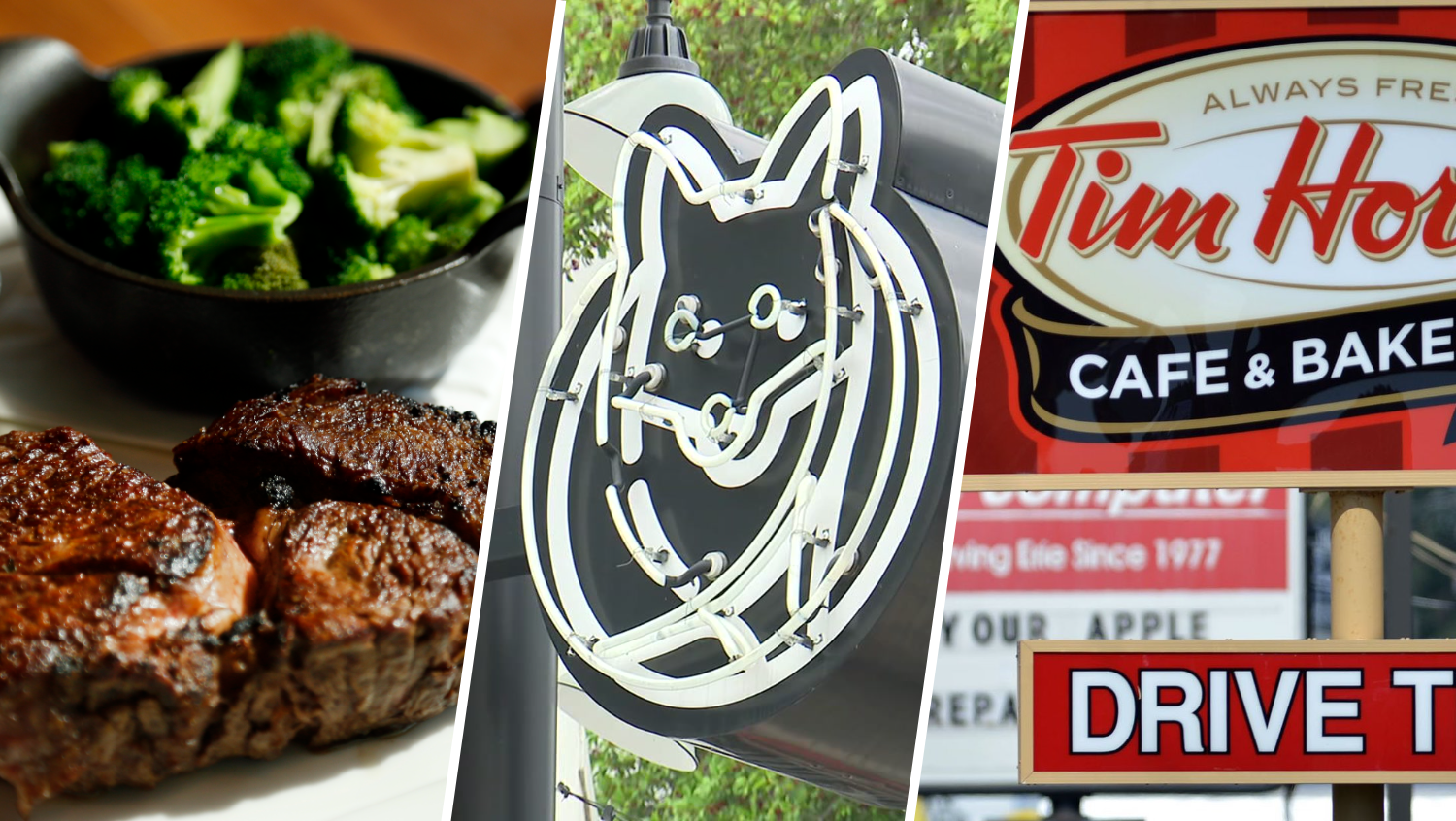
Rising from the dust of this nation’s most profound environmental disaster comes music. Verdigris Ensemble will present the world premiere of Dust Bowl at Hamon Hall in Winspear Opera House in the Dallas Arts District from February 27 – 29 and at St. Stephen Presbyterian Church in Fort Worth on March 1.
Sam Brukhman, Verdigris Ensemble’s artistic director, commissioned Dust Bowl from composer Anthony J. Maglione and librettist Ron Witzke, faculty members at William Jewell College. At the Hamon Hall performances, singers will stand on a stage covered in sand and projections created by visual artists Camron and Courtney Ware will transport audiences to the 1930s.
Dust Bowl is comprised of 18 individual movements divided into three parts. “Following the opening chorus, ‘Part 1: The Promise’ contains texts that give insight into what was happening in the US that set the stage for the great dust storms. ‘Part 2: The Peril’ focuses on individual experiences and accounts from people who were living through the drought, storms, and famine. ‘Part 3: The Prophecy’ uses primary source texts to inspire the audience to think about whether or not we have done enough as a society to make sure we don’t find ourselves in this position again,” Maglione said.
Witzke began developing the libretto for The Dust Bowl with a summer research trip across The Great Plains. “After being offered the task of compiling the libretto for the music, I re-watched Ken Burns’ PBS special, read several of the secondary sources, and was inspired to draft a few poems. Two locales in particular were common in the all the bibliographies – the No Man’s Land Museum in Goodwell, OK, and the Cimarron County Heritage Museum in Boise City. I also knew that my last living aunt on my father’s side of the family had recently moved back to Hooker, OK to live near her daughter,” Witzke said. “She was more than happy to oblige and provided insights into the events in the ‘dirty thirties.’ I visited both museums the following day, and read and photographed dozens of documents, both primary and secondary materials. The curator at the CCHM was gracious with her time, directing me to the file cabinets where Burns’ team spent weeks and months perusing primary sources as they prepared for their documentary.”
Witzke combined his original poetry with stories from Tim Egan’s The Worst Hard Time and the letters of Caroline Henderson, an Oklahoma homesteader whose writings were published in The Atlantic Monthly.
“I had written about seven or eight original poems that provided some thematic thread to the story. ‘Voices’ culled from the primary sources, especially Caroline Henderson’s, were beautifully and elegantly written, and thus provided several lyrical sections in the libretto. Weaving Henderson’s lyricism with the stark and poignant prose of Tim Egan and others made for a variety of musical expressions,” Witzke said.
Maglione created the music to reflect the era’s hardships and vibrant characters, including Tex Thorton, a so-called rainmaker who attempted to use explosives to blast rain out of the clouds over Dalhart, Texas.
“I felt the work would be missing something if I didn’t try to incorporate sounds that, upon first hearing, would take the audience back almost a hundred years. I went back and forth between instrumentations and eventually settled on including a chamber ensemble composed of folk instruments (violin, mandolin, guitar, piano, bass). This is very exciting for me because I’ve taken the sound of a traditional group of instruments, distilled it down to their basic components, and put them back together in a way in which they aren’t necessarily heard on a daily basis. So, what the audience will experience is a variety of sounds from modern classical music like expressive classical singing and beautiful violin solos, to a hoedown where that same violin now plays more like a fiddle and the singers use a less ‘classical’ tone,” Maglione said.
Among stories of jackrabbit drives and dust pneumonia are contrasting views of the unfolding crisis as described by Henderson and John McCarty, the editor of Dalhart’s newspaper.
“John McCarty, who, in spite of the obvious, potent and growing evidence of climate change, chose to publicly deny it, both forcefully and disingenuously. He seemed obsessed with maintaining Dalhart’s status as a destination city that would support a growing economy,” Witzke said. “Contrast McCarty with Mrs. Henderson. Reading her letters published in The Atlantic Monthly provide a personal, compelling history, unadorned and heart-achingly honest. Hers represents a voice of both reason and clarity, giving us one of the richest sources of historical prose in American history.”
Translating the overwhelming dust storm of April 14, 1935 into music was not easy. “Movement 11. Chorus: ’Black Sunday’ begins with the violin and choir exchanging between beautiful sonorities set to text from Mr. Egan’s book to depict the calm before the storm. I don’t want to give away too much, but the sound abruptly changes and the text from the Dust Bowl survivors is incorporated into the work. Then the choir emulates a 1930s era warning siren and one can almost feel the intensity of the storm rolling in,” Maglione said.
For Witzke, Maglione and Brukhman, the recent Australian wildfires make the Dust Bowl’s legacy urgently relevant.
The Scene
“Sam, Anthony and I raise our voices with others, calling for a serious and sustained effort by all those in power to initiate dynamic changes to address a second and, potentially, more disastrous Dust Bowl that threatens a much wider geography than the American Great Plains.,” Witzke said.
Learn more: https://www.verdigrismusic.org/



